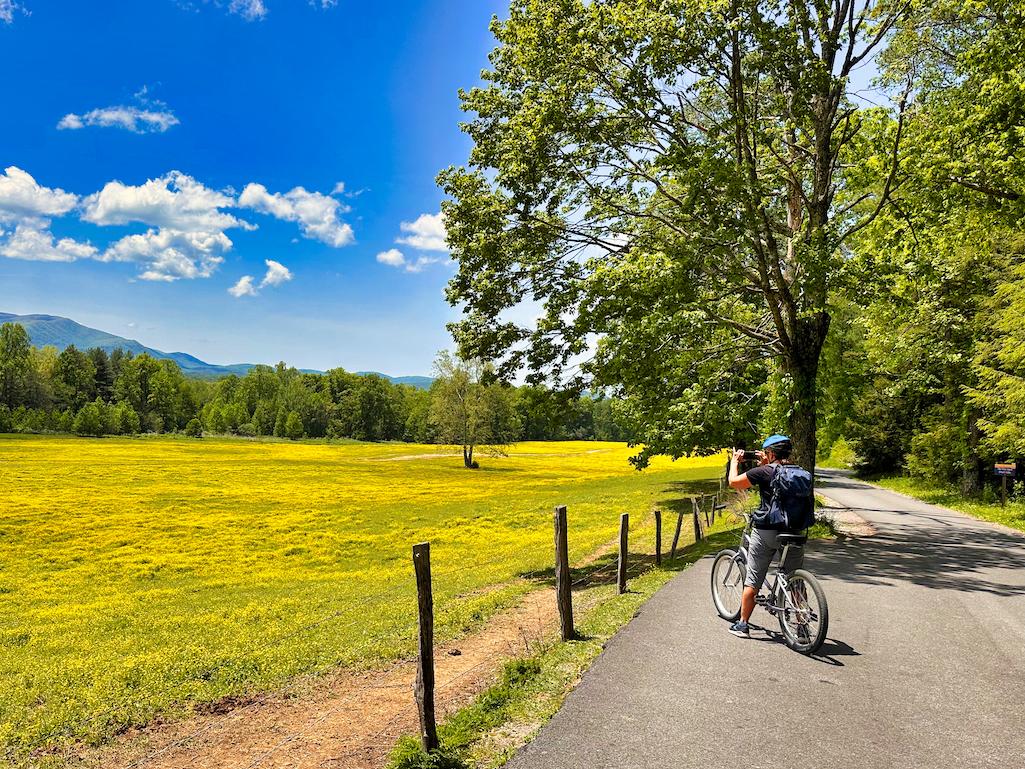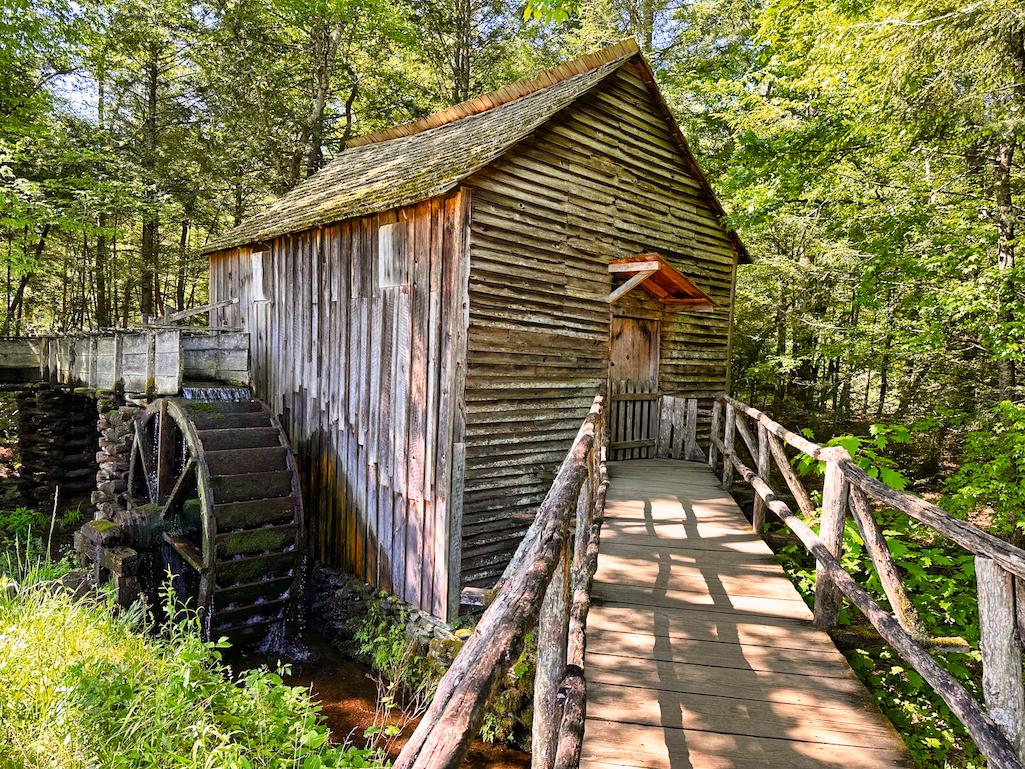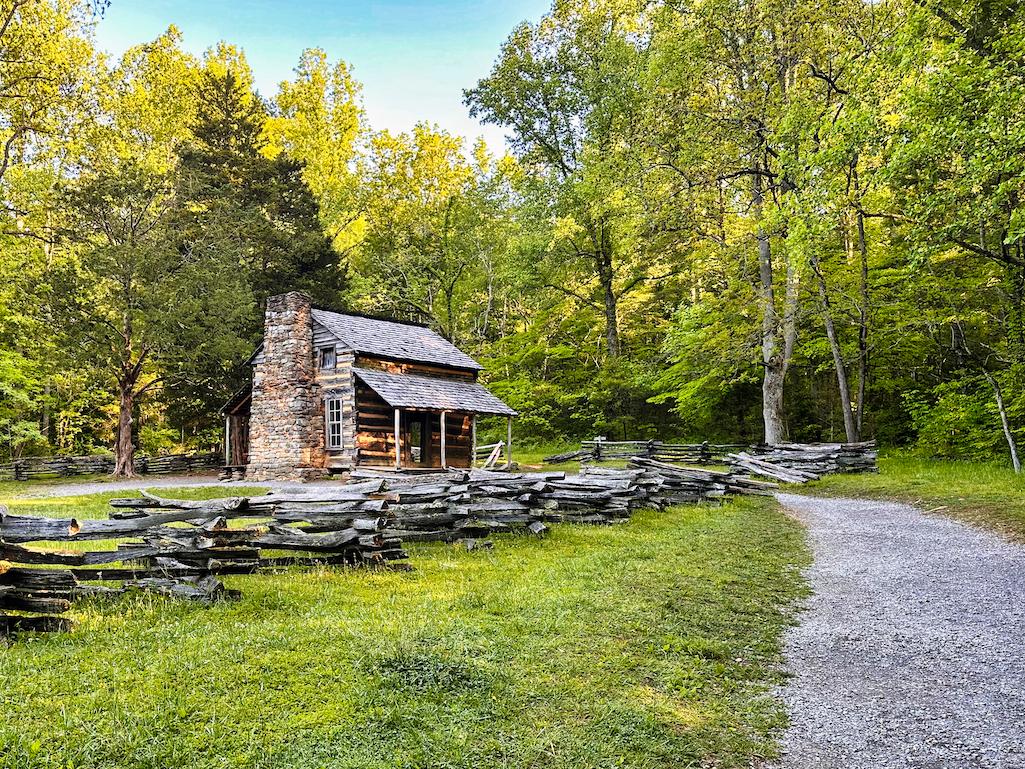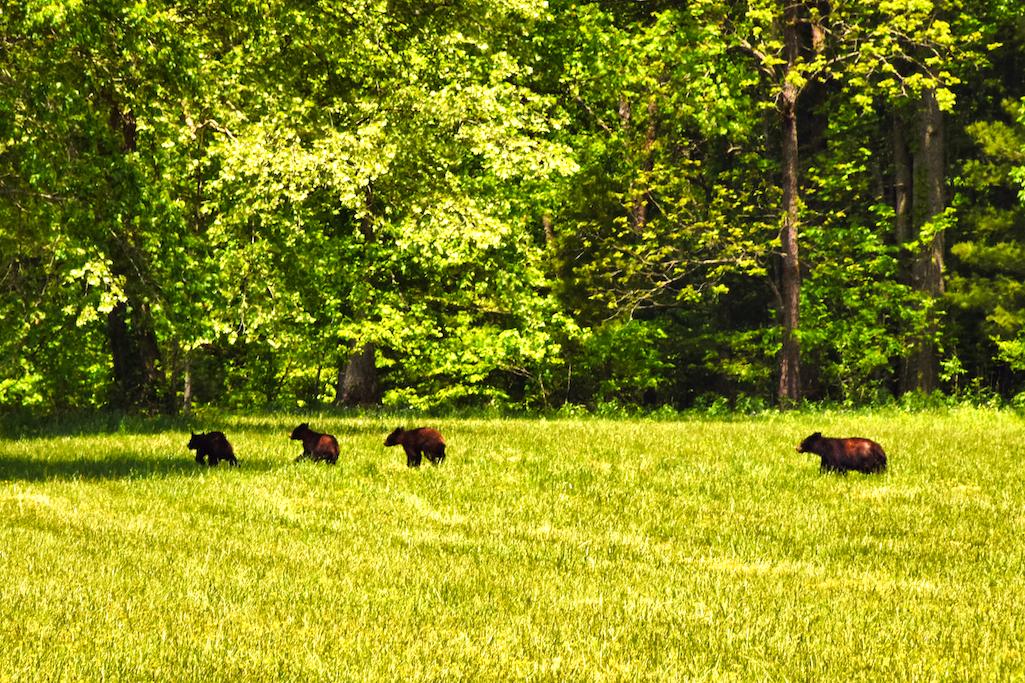
Biking Cades Cove without cars is a great way to experience Great Smoky Mountains National Park/Becky Lomax
Pedal Power: Experience Cades Cove In Great Smoky Mountains National Park
By Becky Lomax
In Tennessee, Great Smokey Mountains National Park harbors a one-way road in bucolic Cades Cove. Its 11-mile paved loop is loaded with scenery, historical sites, and wildlife. But we’d heard about the cove’s famed car jams due to around two million annual visitors: lines of vehicles inching slowly along the road and parking lot congestion that prevented stopping at sites. Clearly, the car approach did not appeal to my sister or me!
We wanted to visit Cades Cove in a vehicle-less manner for a more intimate experience, so we planned our park trip to include a Wednesday. Bicyclists have long ridden the loop contending with cars or taking advantage of the few vehicle-free morning hours twice a week. In 2020, that changed. The NPS converted Wednesdays from May through September to vehicle-free all day. Since then, bicyclists, pedestrians, a wheelchair users can enjoy the road at their leisure.

The working gristmill is located near the Cades Cove Visitor Center about half way through the 11-mile ride/Becky Lomax
Cades Cove Trading Company had to increase the size of their fleet to accommodate the demand for bicycle rentals. The Wednesday ride is so popular that renters form a line even before the shop’s 7 am opening. When the parking lot packs out, the entrance is closed and visitors must return later in the day. Since many riders finish in three hours, parking and rental bikes turn over frequently.
We rented our bikes, cruisers with seven gears and a rear brake, and donned the included helmets. Pedaling only a few minutes took us to the start of the one-way road. Within the first half-mile of the ride, we tasted what our day would be like. As the early morning sun glinted across a green field, it lit up a flock of turkeys pecking their way through the grass. We photographed them and watched the gobbler strut his fanned plumage with little interest from the hens.
We spun our wheels along flats alternating between lush hardwood forests and broad meadows. A couple e-bikes and a few local cyclists decked out in racing togs passed us. Families rode together, kids on bikes or tots in trailers. Some riders veered off onto the two gravel short cuts to create smaller loops.

The John and Lucretia Oliver cabin from the 1820s is one of the oldest historic structures in Great Smoky Mountains National Park/Becky Lomax
Then we hit our first hill. On a 21-speed bike, the short hill would be a cinch. But even first gear of our comfort bikes wasn’t low enough to propel us up. We walked the few steps to the crest before mounting our bikes again. Mostly gentle and short undulations made up the loop, but two steeper descents had visual warning signs to walk--icons of a rider flying over the handlebars. Even though our rentals had only one brake on the rear tire rim, we carefully controlled our descents at these two spots to enjoy the thrill anyway.
Cades Cove is known for its historic sites: homesteads, churches, graveyards, and even a functional gristmill where you can watch wheat ground into flour. On bikes, we didn’t have to worry about finding a parking spot at any of these sites. We dismounted, propped our bikes with kickstands, read interpretive signs, and toured the buildings. Where volunteer docents were present, we learned about the early Cades Cove community in the 1800s.
Soon the stops for watching black bears nearly outnumbered the stops at historic sites. Shortly after we’d started, we had encountered several bikers pointing into the woods. An adult black bear burrowed its nose in the deep grass, munching. A uniformed volunteer bike patroller explained that good food sources in early May were sparse…hence the intent focus on eating as much nutrition as possible. My sister was thrilled to see a bear.

Black bears are frequent visitors to the cove/Becky Lomax
Later, a sow and two yearling cubs romped in a field behind one homestead. We also encountered a bicycle jam where volunteer bike patrollers had halted riders to allow another sow commandeering the road with her cubs to move off into the forest. Further on, one bear shot across the road between another rider and me, a little too close for comfort.
We finished the leisurely loop in four hours—more time than most bikers take. But we toured every historic site, perused all the interpretive exhibits, and lingered with bear watching. After an ice cream break at the store, we grabbed our bikes to ride the smallest loop again. And yes, we saw more bears!
Things to know:
- Parking passes ($5 per day) are required for Cades Cove. They are sold at visitors centers.
- Cades Cove Trading Company rents bikes: https://cadescovetrading.com/bikes/
Becky Lomax celebrates outdoor experiences, especially in national parks. She authors Moon Travel Guides, magazine stories, and web content.



Add comment